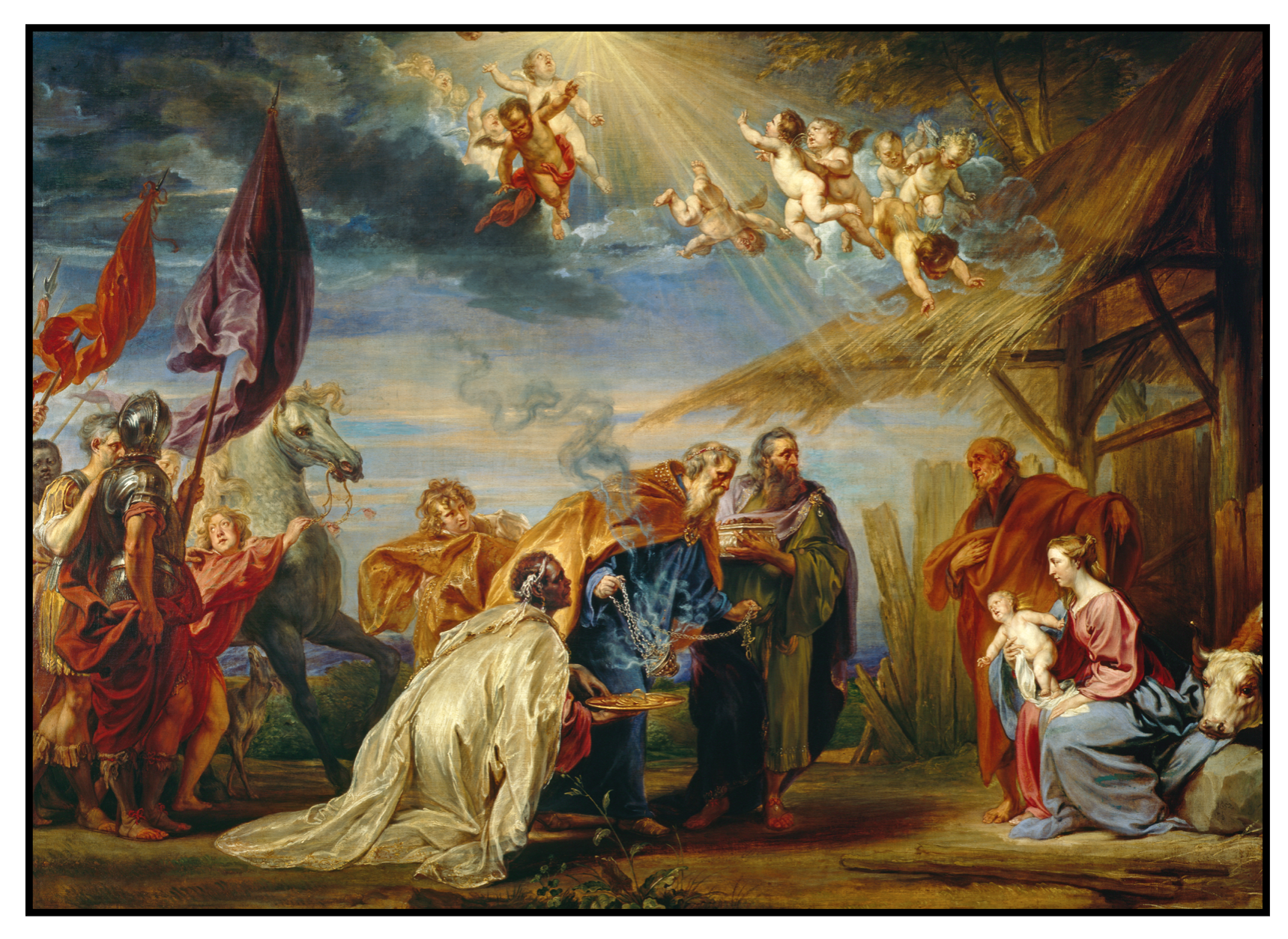Object of the Month: December 2017
The Adoration of the Magi
Oil on canvas, Initialed and dated, lower right: JB 1652
Jan Boeckhorst, called Lange Jan
Flemish, c. 1604–1668
Click on the link for additional reference information.
Among the Museum & Gallery’s collection, there are both famous and unknown artists. But what about those who fall right in the middle? What about the artists who have active careers and equal skill to the “greats,” but never achieve the fame of their contemporaries? One of these artists is the Flemish master, Jan Boeckhorst.
Jan Boeckhorst, nicknamed Lange Jan (“Tall John”) was born in Münster, Germany in 1604. At seventeen, he became a canon in the Jesuit church, but at the advanced age of twenty-two (long past the standard age for training) decided to become a painter.
In the 1620s, he moved to the coastal city of Antwerp—home to some of the greatest artists of his time. Some historians claim he studied with Jacob Jordaens while others say it was Peter Paul Rubens. More than likely, Boeckhorst studied with Jordaens because Rubens was in Spain and England in the late 1620s. Around 1634, Boeckhorst achieved the title of Master in Antwerp’s Guild of St. Luke and worked alongside the other Flemish masters including Rubens and Anthony van Dyck. Boeckhorst visited Italy twice to study the sixteenth-century Venetian masters such as Titian and Tintoretto and returned to Antwerp by 1640.
Throughout his later life, he painted a variety of subject matter including religious and mythological for church altarpieces and private collectors. His artistic work ranged from paintings, designing tapestries, and illustrating for religious books. He also contributed to the founding of the Antwerp Academy. After a full life, he died on April 21, 1668.
Despite his active career, much of Boeckhorst’s work is unknown, unsigned or wrongly attributed, so it has been difficult to compile a comprehensive list of his art. One of the reasons his work might be misattributed is his close work relationship with Rubens. There are many evidences of their collaboration based on the standard studio practice of the time. Boeckhorst would help touch up paintings under Rubens’ instructions and even assisted the master in large commissions. After Rubens’ death in 1640, Boeckhorst finished or even restored Rubens’ remaining works. An example of their collaboration is King David Playing the Harp at the Städel Museum.
In M&G’s collection, there are three paintings by Boeckhorst; of these The Adoration of the Magi is considered his greatest work in America. In the lower right corner, his initials and date are painted on a rock face: JB 1652.
Boeckhorst displays a heightened attention to texture with the wafting incense, richness of the garments, and different animals. Because of his saturated colors, graceful composition and dramatic movement, scholars consider this painting to be a masterpiece of the High Baroque style.
KC Christmas, M&G graduate assistant
Published in 2017
